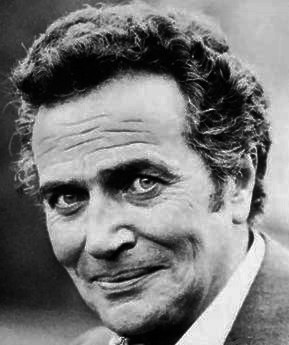
Michael Bentine, was a British comedian, comic actor and founding member of the Goons. His father was a Peruvian Briton.

Kenneth Gilbert More, CBE was an English film and stage actor.
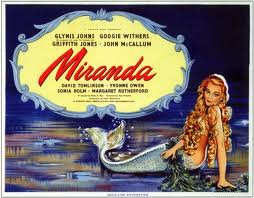
Miranda is a 1948 black and white British comedy film, directed by Ken Annakin and written by Peter Blackmore, who also wrote the play of the same name from which the film was adapted. The film stars Glynis Johns, Googie Withers, Griffith Jones, Margaret Rutherford, John McCallum and David Tomlinson. Denis Waldock provided additional dialogue. Music for the film was played by the London Symphony Orchestra, conducted by Muir Mathieson. The sound director was B. C. Sewell.

Harold Thomas Gregson, known professionally as John Gregson, was an English actor of stage, television and film, with 40 credited film roles. He was best known for his crime drama and comedy roles.
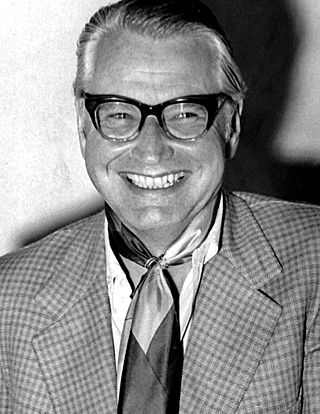
Kenneth Cooper Annakin, OBE was an English film director.

Genevieve is a 1953 British comedy film produced and directed by Henry Cornelius and written by William Rose. It stars John Gregson, Dinah Sheridan, Kenneth More and Kay Kendall as two couples comedically involved in a veteran automobile rally.
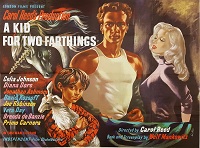
A Kid For Two Farthings is a 1955 British comedy-drama film directed by Carol Reed. The screenplay was adapted by Wolf Mankowitz from his 1953 novel of the same name. The title is a reference to the traditional Passover song, "Chad Gadya", which begins "One little goat which my father bought for two zuzim". At the end of the film, Mr. Kandinsky softly sings fragments of an English translation of the song.
Ian Dalrymple was a British screenwriter, film director, film editor and film producer.
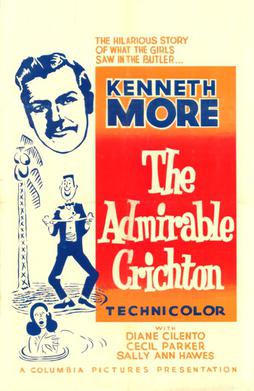
The Admirable Crichton is a 1957 British south seas adventure comedy romance film directed by Lewis Gilbert and starring Kenneth More, Diane Cilento, Cecil Parker and Sally Ann Howes. The film was based on J. M. Barrie's 1902 stage comedy of the same name. It was released in the United States as Paradise Lagoon.
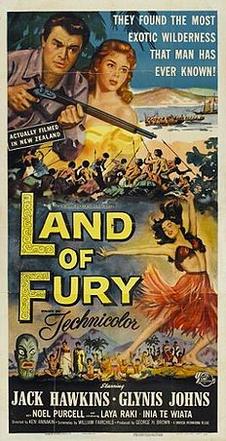
The Seekers is a 1954 British-New Zealand adventure film directed by Ken Annakin. It starred Jack Hawkins, Glynis Johns, Noel Purcell, and Kenneth Williams. The film was produced by the Rank Organisation and was shot at Pinewood Studios with location shooting around Whakatāne. The film's sets were designed by the art director Maurice Carter with costumes by Julie Harris. It was the first major international studio film shot in New Zealand. The film was adapted from the novel The Seekers by New Zealander John Guthrie. It was released in the United States by Universal Pictures as Land of Fury.
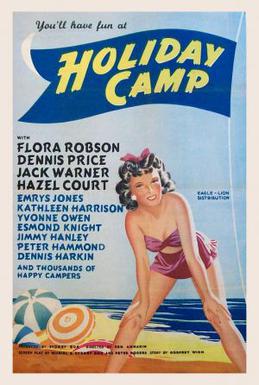
Holiday Camp is a 1947 British comedy drama film directed by Ken Annakin, starring Flora Robson, Jack Warner, Dennis Price, and Hazel Court, and also features Kathleen Harrison and Jimmy Hanley. It is set at one of the then-popular holiday camps. It resonated with post-war audiences and was very successful. It was the first film to feature the Huggett family, who went on to star in "The Huggetts" film series.

You Know What Sailors Are is a 1954 British comedy film directed by Ken Annakin and starring Donald Sinden, Michael Hordern, Bill Kerr, Dora Bryan and Akim Tamiroff. The screenplay by Peter Rogers was based on the 1951 novel Sylvester by Edward Hyams. It was shot at Pinewood Studios and on location around the Isle of Portland. The film's sets were designed by the art director George Provis.
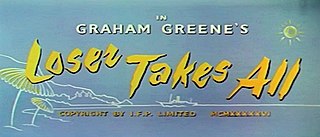
Loser Takes All is a 1956 British comedy film directed by Ken Annakin, starring Glynis Johns, Rossano Brazzi, and Robert Morley, with a screenplay by Graham Greene based on his 1955 novella of the same name.

We Joined the Navy is a 1962 British comedy film directed by Wendy Toye and starring Kenneth More, Lloyd Nolan, Joan O'Brien, Derek Fowlds, Graham Crowden, Esma Cannon and John Le Mesurier. Produced by Daniel M. Angel, it was based on the 1959 novel of the same name by John Winton, a former Royal Navy lieutenant commander.
Earl St. John was an American film producer in overall charge of production for The Rank Organisation at Pinewood Studios from 1950 to 1964, and was credited as executive producer on 131 films. He was known as the "Earl of Pinewood". John Davis of Rank called him "the greatest showman that The Rank Organisation has ever had, and probably the greatest showman to have lived in this country. "

Three Men in a Boat is a 1956 British CinemaScope colour comedy film directed by Ken Annakin, starring Laurence Harvey, Jimmy Edwards, David Tomlinson and Shirley Eaton. It was written by Hubert Gregg and Vernon Harris based on the 1889 novel of the same name by Jerome K. Jerome.
Beryl May Jessie Toye,, known professionally as Wendy Toye, was a British dancer, stage and film director and actress.

The Wind Cannot Read is a 1958 British drama film directed by Ralph Thomas and starring Dirk Bogarde, Yoko Tani, Ronald Lewis and John Fraser. It was based on the 1946 novel by Richard Mason, who also wrote the screenplay.

Forces' Sweetheart is a 1953 British comedy film directed by Maclean Rogers and starring Hy Hazell, Harry Secombe and Michael Bentine. Two gormless soldiers become infatuated with a female entertainer.
Walter Percy Day O.B.E. (1878–1965) was a British painter best remembered for his work as a matte artist and special effects technician in the film industry. Professional names include W. Percy Day; Percy Day; "Pop" or "Poppa" Day, owing to his collaboration with sons Arthur George Day (1909–1952) draughtsman, Thomas Sydney Day (1912–1985), stills photographer and cameraman, and stepson, Peter Ellenshaw, who also worked in this field.
















